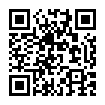Social Capital of Students in the Digital Educational Environment: Offline and Online Learning
Research Article
Abstract
References
2. Zaborova E. N., Glazkova I. G.., Markova T. L. (2017). Distance learning: students’ perspective. Sotsiologicheskie Issledovaniia. No. 2. P. 131–139. (In Russ.).
3. Digital Economy Indicators in the Russian Federation: 2021: Data Book. (2021). Ed. by G. Abdrakhmanova, K. Vishnevskiy, L. Gokhberg et al. Moscow: HSE. 380 p. (In Russ.).
4. Coleman J. S. (2001). Kapital sotsial’nyy i chelovecheskiy. [Social capital in the creation of human capital]. Transl. from Eng. by L. Strelnikova, A. Stasenko. Obshchestvennyye nauki i sovremennost’. No. 3. P. 121–139. (In Russ.).
5. Krekhovets E., Poldin O. (2016). Social Capital of Students in the Light of Social Networks: Structure and Key Actors Analysis. Voprosy obrazovaniya. No. 3. P. 59–79. DOI: 10.17323/1814-95452016-3-59-79 (In Russ.).
6. Ando S. (2021). University teaching and learning in a time of social distancing: A sociocultural perspective. Journal of Human Behavior in the Social Environment. Vol. 31. No. 1–4. P. 435–448. DOI: 10.1080/10911359.2020.1814928
7. Aristovnik A., Keržič D., Ravšelj D., Tomaževič N., Umek L. (2020). Impacts of the COVID-19 Pandemic on Life of Higher Education Students: A Global Perspective. Sustainability. Vol. 12. No. 20. P. 1–34. 8438. DOI: https://doi.org/10.3390/su12208438
8. Arnado J. M., Jabal R. F., Poa M. R, Viray T. C. (2021). Trust in Pandemic-Induced Online Learning: Competitive Advantage of Closure and Reputation. International Journal of Sociology of Education. Vol. 10. No. 2. P. 192–217. DOI: 10.17583/rise.2021.7088
9. Azorín C. (2020). Beyond COVID-19 supernova. Is another education coming? Journal of Professional Capital and Community. Vol. 5. No. 3/4. P. 381–390. DOI: 10.1108/jpcc-05-2020-0019
10. Bano S., Cisheng W., Khan A., Khan N. (2019). WhatsApp use and student’s psychological well-being: Role of social capital and social integration. Children and Youth Services Review. Vol. 103. P. 200–208. DOI: 10.1016/j.childyouth.2019.06.002
11. Brouwer J., Jansen E., Flache A., Hofman A. (2016). The impact of social capital on self-efficacy and study success among first-year university students. Learning and Individual Differences. Vol. 52. P. 109–118. DOI:10.1016/j.lindif.2016.09.016
12. Coleman J. S., Hoffer T. (1987). Public and Private High Schools: The Impact of Communities. New York: Basic Books. 254 p.
13. Gittell R., Vidal A. (1998). Community Organizing: Building Social Capital as a Development Strategy. Thousand Oaks, CA: Sage Books. 196 p.
14. Hanifan L. J. (1916). The Rural School Community Center. Annals of the American Academy of Political and Social Science. Vol. 67. P. 130–138.
15. Heidari E., Salimi G., Mehrvarz M. (2020). The influence of online social networks and online social capital on constructing a new graduate students’ professional identity. Interactive Learning Environments. P. 1–18. DOI: https://doi.org/10.1080/10494820.2020.1769682
16. Israel G., Beaulieu L., Hartless G. (2009). The Influence of Family and Community Social Capital on Educational Achievement. Rural Sociology. Vol. 66. No. 1. P. 43–68. DOI:10.1111/j.1549-0831.2001.tb00054.x
17. Joanis S., Burnley J., Mohundro J. (2020). Social Capital’s Impact on College Graduation Rates, Debt, and Student Loan Defaults. Journal of College Student Retention: Research, Theory & Practice. P. 1–20. DOI: 10.1177/1521025120918879
18. Khan M. A. (2021). COVID-19’s Impact on Higher Education: A Rapid Review of Early Reactive Literature. Educ. Sci. Vol. 11. P. 1–14. 421. DOI: https://doi.org/10.3390/educsci11080421
19. Lin N. (1999). Building a network theory of social capital. Connections. Vol. 22. P. 28–51. DOI: 10.4324/97813 15129 457-1
20. Pishghadam R., Zabihi R. (2011). Parental education and social and cultural capital in academic achievements. International Journal of English Linguistics. Vol. 1. No. 2. P. 50–57.
21. Pusztai G. (2014). The effects of institutional social capital on students’ success in higher education. Hungarian Educational Research Journal. Vol. 4. No. 3. P. 60–73.
22. Putnam R. D. (2000). Bowling alone: The collapse of America’s social capital. New York, Simon & Shuster. 544 p.
23. Putri R., Purwanto A., Pramono R., Asbari M., Wijayanti L., Hyun C. (2020). Impact of the COVID-19 Pandemic on Online Home Learning: An Explorative Study of Primary Schools in Indonesia. International Journal of Advanced Science and Technology. Vol. 29. No. 5. P. 4809–4818.
24. Rogošić S., Baranović B. (2016). Social capital and educational achievements: Coleman vs. Bourdieu. Center for Educational Policy Studies Journal. Vol. 6. No. 2. P. 81–100.
25. Schwartz S. E., Kanchewa S. S., Rhodes J. E., Gowdy G., Stark A. M., Horn J. P., Spencer R. (2018). «I’m Having a Little Struggle With This, Can You Help Me Out?»: Examining Impacts and Processes of a Social Capital Intervention for First-Generation College Students. American Journal of Community Psychology. Vol. 61. No. 1-2. P. 166–178. DOI:10.1002/ajcp.12206.
26. Smoyer A., O’Brien K., Rodriguez-Keyes E. (2020). Lessons learned from COVID-19: Being known in online social work classrooms. International Social Work. Vol. 63. P. 651–654. DOI: https:// doi.org/10.1177/0020872820940021
27. Wellman B., Haase A., Witte J., Hampton K. (2001). Does the Internet increase, decrease, or supplement social capital? Social networks, participation, and community commitment. American Behavioral Scientist. Vol. 45. No. 3. P. 436–455.
28. Williams D. (2006). On and Off the ’Net: Scales for Social Capital in an Online Era. Journal of Computer-Mediated Communication. Vol. 11. No. 2. P. 593–628. DOI:10.1111/j.1083-6101.2006.00029.x
29. Woolcock M., Narayan D. (2000). Social capital: implications for development theory, research, and policy. World Bank Res Obs. Vol. 15. P. 225–249. DOI: 10.2307/3986417
30. Wut T., Xu J. (2021). Person-to-person interactions in online classroom settings under the impact of COVID-19: a social presence theory perspective. Asia Pacific Education Review. Vol. 22. No. 3. P. 371–383. DOI:10.1007/s12564-021-09673-1

Received: 04.02.2022
Accepted: 16.09.2022







 Publisher: Federal Center of Theoretical and Applied Sociology of the Russian Academy of Sciences (FCTAS RAS)
Publisher: Federal Center of Theoretical and Applied Sociology of the Russian Academy of Sciences (FCTAS RAS)